#sustainable tropical design
Explore tagged Tumblr posts
Text
Celeste Cove
“Celeste Cove” is a luxurious three-story beachfront property located on a pristine Jamaican coastline. This architectural marvel combines modern elegance with tropical design, featuring curved, organic shapes and expansive glass walls that maximize panoramic ocean views. The structure is elevated on sturdy, reinforced concrete pilings to ensure sea-level safety, while the facade blends natural…
#Celeste Cove#elevated contemporary home#Jamaica#Jamaican beach retreat#luxury coastal living#Modern beachfront architecture#panoramic ocean views#sustainable tropical design
0 notes
Text










Casa Copas, Valle de Bravo, State of Mexico, Mexico,
Courtesy: PPAA
Photographs by Rory Gardiner and Luis Garvan
#art#design#architecture#minimal#nature#interior design#interiors#luxury lifestyle#retreat#valle de bravo#mexico#casa#casa copas#PPAA#rory gardiner#tropical house#tropical#forest#sustainability#sustainable architecture
146 notes
·
View notes
Text
youtube
Beautiful solarpunk visuals in this short animation from the Gobelins School of Animation. The rest of their catalogue of short, creative, and diverse animations on Youtube are well worth checking out.
#solarpunk#environmental#hopepunk#animation#graphic design#flat design#tropical#ocean#seapunk#sustainability#bright colours#Youtube
77 notes
·
View notes
Photo

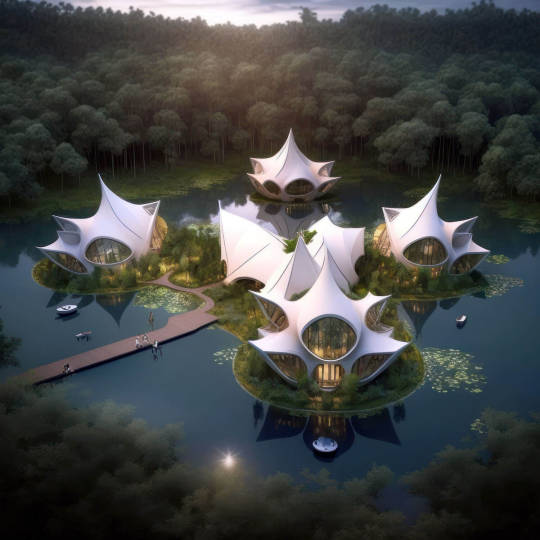




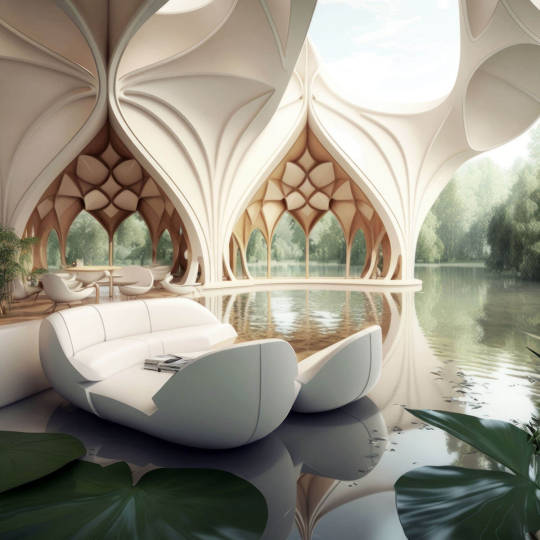
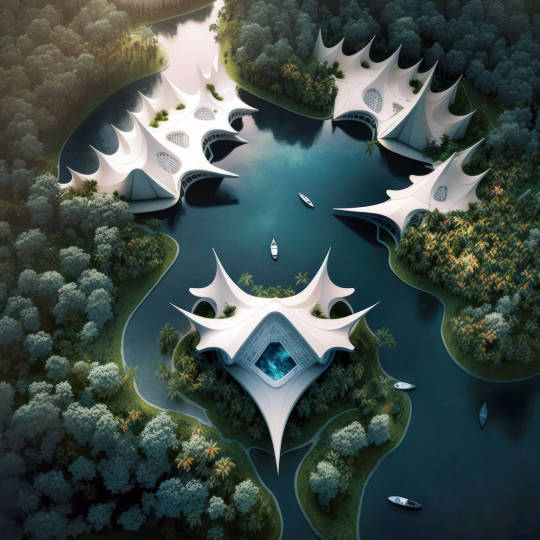

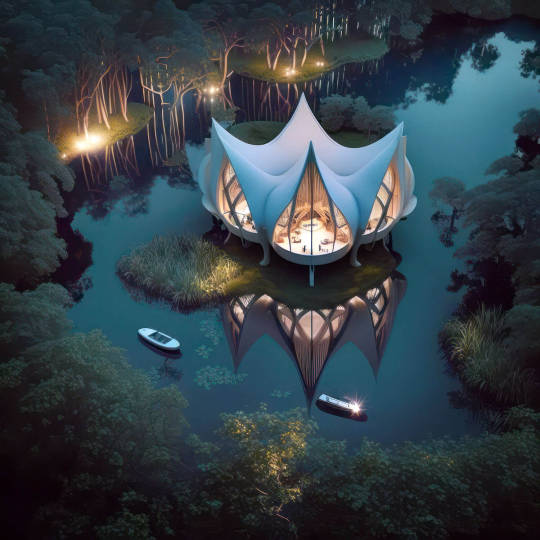
Manta Rays, Bali, Indonesia,
Vincent Callebaut Architectures
#art#design#architecture#interios#resort#manta ray#bali#indonesia#vincent callebaut#concept#render#tropical#boutique hotel#luxury hotels#design hotel#hotel concept#cgiart#floating house#floating home#sustainable architecture#organic#ecolodge#Lodging#hospitality
55 notes
·
View notes
Text
#Landscaping#Garden Design#Hardscaping#Softscaping#Outdoor Living#Landscape Architecture#Sustainable Landscaping#Urban Landscaping#Landscape Lighting#Water Features#Native Plants#Xeriscaping#Backyard Design#Patio Design#Planting Design#Edible Landscaping#Landscape Maintenance#Eco-Friendly Landscaping#Horticulture#Perennial Gardens#Seasonal Landscaping#Tropical Landscaping#Japanese Garden#Modern Landscape#Cottage Garden#Mediterranean Garden#Wildlife Garden#Garden Pathways#Rock Gardens#Vertical Gardens
2 notes
·
View notes
Text
Case Study: Panama Permaculture
This case study shows my design for a client in Panama who is looking to create a care facility for those with Alzheimers and dementia on her property. Holistic Design for Holistic Care Caring for her own mother, my client has discovered the immense benefits of holistic care in a restful and natural environment and wishes to open up a facility on her property so others can receive the same care…
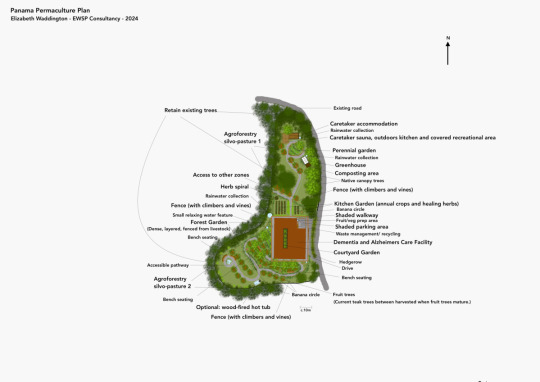
View On WordPress
#alzheimers care#dementia care#holistic care#holistic design#Panama permaculture#permaculture#permaculture design#permaculture panama#sustainability#sustainable#therapeutic spaces#tropical permaculture
1 note
·
View note
Text
Beyond Citrus: Unusual and Exotic Tropical Fruits Perfect for Arizona’s Climate
In Queen Creek, Arizona, which has a desert climate, growing tropical fruits can be a bit challenging, but not impossible! Pomegranate fruit grows in Arizona. Beyond the well-suited citrus varieties, there are a few tropical fruits that can adapt to the hot and dry conditions with some extra care: Pomegranate: These are not only drought-tolerant but also produce beautiful flowers and delicious…

View On WordPress
#Arizona Plants#Climate-Resilient Plants#desert gardening#Desert Wildlife#Drought-Tolerant Gardening#Eco-Friendly Gardening#Edible Gardening#Garden Design#Garden Maintenance#Heat Tolerant Plants#Home Gardening#Landscape Architecture#organic gardening#plant care#Soil Health#Sustainable Landscaping#Tropical Fruits in Desert#Urban Gardening#water conservation#Xeriscaping
1 note
·
View note
Text
REVITALIZING PARADISE: LUX* BELLE MARE, MAURITIUS, UNVEILS ITS ELEVATED ELEGANCE
Explore the reimagined luxury of LUX* Belle Mare, Mauritius! Discover its striking design, sumptuous culinary experiences, immersive wellness journeys, and extraordinary experiences in one of the most impressive coastlines in the Indian Ocean.
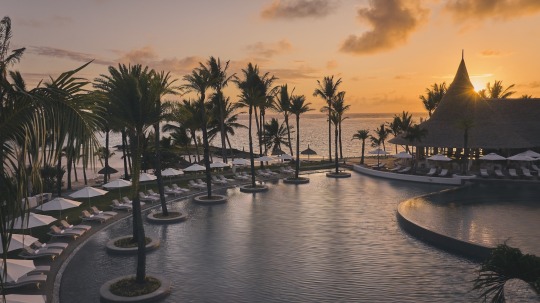
View On WordPress
#Beach Resort#Culinary Experience#Family-Friendly#Hospitality#Island Living#Jean-Francois Adam#Jean-Marc Tang#LUX* Belle Mare#Luxury Resort#Mauritius#Minimalism#Ocean Views#Renovation#Sustainable Luxury#The Lux Collective#Tropical Design#Wellness Journey
1 note
·
View note
Photo

Landscape in Santa Barbara
#Design ideas for a mid-sized tropical drought-tolerant and full sun side yard mulch landscaping. tropical landscape#environmentally friendly#retaining walls#colorful landscape design#sustainable landscape design#landscape#california native plants
0 notes
Text
"In drought-stricken areas, communities facing water shortages, or even in residential and commercial buildings eager to improve their environmental footprints, atmospheric water generators represent a new frontier in water production.
While it might sound like a tidbit from a science fiction movie, even the driest places on earth have moisture in the air that can be extracted and used for everyday necessities like plumbing and drinking.
Unlike traditional dehumidifiers, which also pull moisture from the air, AWGs utilize filtration and sterilization technology to make water safe to drink.
And while there are plenty of AWG companies out there — and the science itself isn’t novel — AWGs are becoming more efficient, affordable, and revolutionary in combating water scarcity in a myriad of communities.
Aquaria Technologies, a San Francisco-based AWG startup, was founded in 2022 to help provide affordable and clean drinking water in areas most affected by climate change.
Using heat exchange and condensation, Aquaria’s generators draw air into their systems, cool that air below its dew point, and as it condenses, capture that water and filter it for consumption.
As the cycle continues, the generator’s refrigerant vaporizes and goes through a process that cools it back into a liquid, meaning the heat transfer cycle repeats continuously in an energy-efficient and self-sustaining system.
“I’m sure you’ve had the experience in the summer, you take a glass of a cold drink out of the fridge and then water droplets form on the side of the bottle,” Aquaria’s co-founder and CEO Brian Sheng, said in a podcast episode. “That’s actually condensation.”
Sheng continued: “The question is, how do we create condensation? How do we extract water out of the air in large volume and using little energy? That’s what our technology does. We have created both active and passive cooling methods where we use special materials, and we’ve created heat exchange and recovery systems and airflow design, such that we’re maximizing heat exchange, and then we’re able to extract large volumes of water.”
Aquaria has created a number of generators, but its stand-alone model — the Hydropack X — can replace an entire home’s dependence on municipal water, producing as much as 264 gallons of potable water per day.
Other models, like the Hydrostation, can provide water for up to 1,500 people at parks, construction sites, or other outdoor public areas. The Hydropixel can make 24 gallons of water per day for a seamless at-home application, requiring a simple outlet for power.
“Atmospheric water generators present a groundbreaking solution to the global challenge of clean water scarcity, leveraging the humidity present in the air to produce potable water,” the company’s website explains.
“This technology is versatile, functioning efficiently across diverse climates — from arid regions to tropical settings. From rural communities in developing countries to advanced cities facing unexpected droughts, atmospheric water generators have a wide range of applications… transforming lives and providing secure, clean water sources.”
Considering an estimated 2.2 billion people lack access to clean water globally — including in American cities like Flint, Michigan, or Modesto, California — innovative solutions like AWGs are vital to maintaining the basic human right to clean water.
The World Economic Forum has begun to dip its toes into this technology as well, implementing public and private partnerships to introduce AWG units in Arizona’s Navajo Nation, where the machines produce about 200 gallons of clean water per day.
“When combined with an appropriate level of community engagement and triple-bottom-line business (people, planet, profit),” a blog post for WE Forum said, “this model can be a powerful stopgap solution where few exist today.”
Similarly, according to New Atlas, Aquaria has a partnership with developers to supply its technology to a 1,000-home community in Hawaii later this year, relying entirely on atmospherically generated water.
The company also has a “Frontier Access Program,” which partners with water-related NGOs, community project developers, and sustainable development groups to deploy this technology in areas most in need.
Regardless of their use cases — in homes, in communities facing water shortages, or at aid sites navigating natural disasters — AWGs have a minimal environmental impact. Sourcing water “from thin air,” requires no plastic bottles, no large-scale plants using up loads of energy, and no byproducts that can harm the environment."
-via GoodGoodGood, August 27, 2024
#water#water shortage#drought#united states#solar power#sustainability#clean water#human rights#good news#hope#solarpunk
544 notes
·
View notes
Text

Jakob Factory Rollimarchini Architekten and G8A Archietcts
The Jakob Factory project offered the design partnership of Rollimarchini Architekten from Bern and Swiss-born G8A Architects the unique opportunity to propose a highly innovative and highly specific manufacturing space, set to become a design reference for tropical sustainable architecture.


The intelligent distribution of work spaces combined with the plantation façade and completely modular interior walls provide a comfortable working space, a pioneering initiative as Jakob Factory becomes the first project in Vietnam proposing completely naturally ventilated manufacturing halls.




283 notes
·
View notes
Text
Azure Haven
#Azure Haven#elevated contemporary home#Jamaican beach retreat#luxury coastal living#Modern beachfront architecture#panoramic ocean views#sustainable tropical design
0 notes
Photo
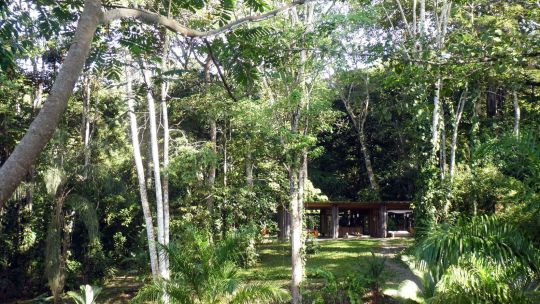
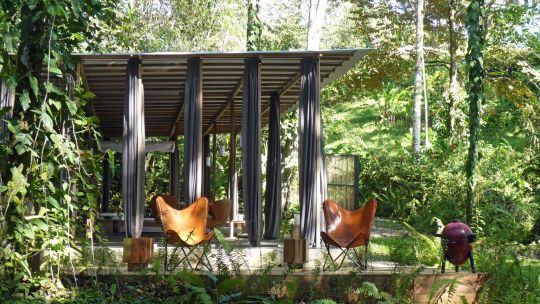
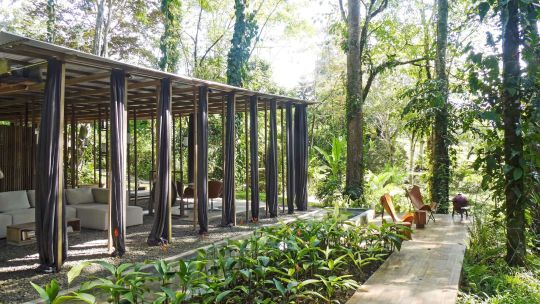
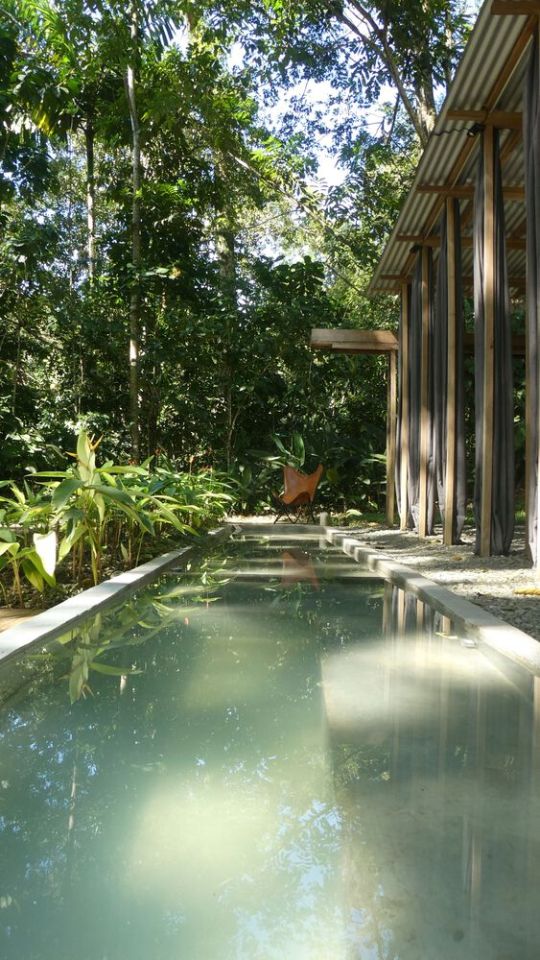

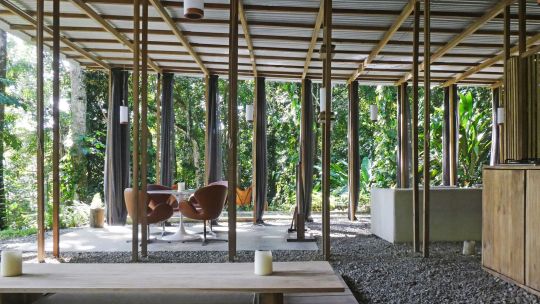
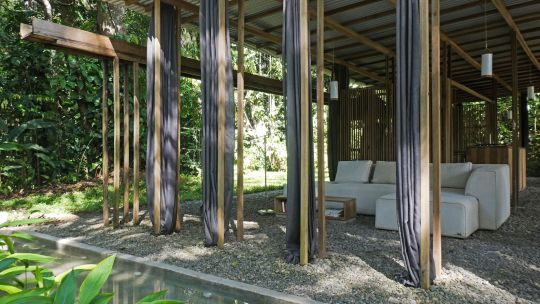
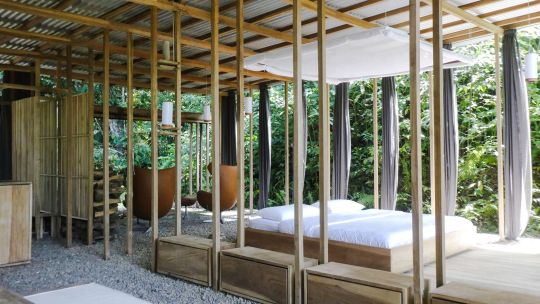
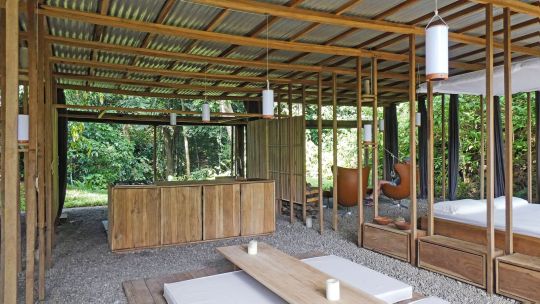

Open House in the Jungle, Costa Rica,
Ksymena Borczynska
#art#design#architecture#interiors#tropical house#jungle#open house#costa rica#summerhouse#retreat#cabin#ksymena borcynska#minimalism#rain forest#sustianability#sustainable architecture#eco fiendly
135 notes
·
View notes
Text
Wildlife find haven amid Brazil’s vanishing savanna
Conservation International is helping recover a savanna habitat nearly twice the size of Manhattan.

Brazil is home to a vast, but overlooked, tropical savanna called the Cerrado.
This sprawling patchwork of open grassland and scattered woodlands covers almost a quarter of the country — an area about the size of Greenland — providing habitat for 1,200 mammals, birds and reptiles and 6,000 plant species. Among its remarkable wildlife are giant anteaters, maned wolves, armadillos and brilliantly colored macaws.
But today, more than half of the original Cerrado has been cleared for cattle ranching and soy farming, making it one of the fastest disappearing ecosystems on Earth. And only a fraction of the remaining Cerrado is fully protected by the Brazilian government — around 3 percent.
In one corner of southwestern Brazil, a project designed by a sustainable timber operator, BTG Pactual Timberland Investment Group (TIG), and supported by Conservation International, is breathing new life into the savanna.
What was once a vast stretch of degraded pastureland just a year ago is being rapidly transformed into tree farms and 2,500 hectares (6,000 acres) of newly restored natural forest. While the project’s primary purpose is to store climate-warming carbon, it is also designed to protect biodiversity.
Continue reading.
#brazil#brazilian politics#politics#environmentalism#animal rights#good news#cerrado#image description in alt#mod nise da silveira
230 notes
·
View notes
Text
#Landscaping#Garden Design#Hardscaping#Softscaping#Outdoor Living#Landscape Architecture#Sustainable Landscaping#Urban Landscaping#Landscape Lighting#Water Features#Native Plants#Xeriscaping#Backyard Design#Patio Design#Planting Design#Edible Landscaping#Landscape Maintenance#Eco-Friendly Landscaping#Horticulture#Perennial Gardens#Seasonal Landscaping#Tropical Landscaping#Japanese Garden#Modern Landscape#Cottage Garden#Mediterranean Garden#Wildlife Garden#Garden Pathways#Rock Gardens#Vertical Gardens
0 notes
Text
As much as I love LOST, I fully appreciate how fucked it became.
But looking back, this was a show that dropped while Suvivor was peak reality television, and it was the first of its kind in a lot of ways to be a network television show filmed at this scale. The large cast, filming on location, the whole premise beyond your standard drama.
I don’t think the writers trusted that unique premise as much as they should. LOST’s character drama was most compelling when it was essentially a retelling of Lord of the Flies. They were issues regular society doesn’t have to think about, blown up into crises, like:
We gotta find safe shelter out of the sun and the elements, but if we do that, we lose our signal fire
We gotta find a sustainable source of freshwater for 108 survivors, but that water is in the Murder Jungle
We need to do complex, life-saving medical procedures and all I have is bamboo and whatever TSA allowed through security
We thought we’d be rescued already so we didn’t ration the airline food and snacks, now we gotta figure out how to hunt, when we’re all (mostly) civilians
People are panicking at the low resources and are throwing suspicions and wild accusations around and now somebody’s dead
There’s language and cultural barriers at play and we don’t have the Internet to translate
The structure of the first season, too, with the 13 core characters each getting their own flashback “how did we get here” episode.
I personally loved the creative design of how they constructed their beach camp toward the middle of season 3-ish, with the giant bamboo pantry, the various tents made from plane wreckage. If you were flipping channels casually one night, and you landed on an episode of LOST, you instantly knew that was an episode of LOST in visuals alone.
I would have been fully on board with four full seasons that didn’t get all tangled up in the time travel nonsense and vastly trimmed down the rabbit hole of the Others and the Dharma people (or the ‘we all died and were in purgatory the whole time’…thing), and really dug into trying to survive without the modern comforts of society, but long term. Kind of like a dramatic version of Swiss Family Robinson, just with a Murder Jungle.
All of LOST’s copycats focused on the plane element, not the idea of isekai-ing a random grab-bag of civilians into an environment that they are not equipped to handle, and watching what successes and failures unfold. And there hasn’t been one since that compares.
You have post-apocalyptic shows, yes, like Walking Dead and Last of Us, but until Fear the Walking Dead, you were working with characters who’d already cut their teeth and figured out that things are not going to get better, some time after the world ended. You don’t have “in a civilized world one second, and then literally falls out of the sky onto a Tropical Murder Island still convincing themselves this is temporary, and only their world has ended”.
I did not care about the love triangle nonsense, I cared about Shannon’s missing medicine kerfuffle that, without any policing authority system in place, devolved into torturing a man with bamboo only to find that the medicine just got washed away in the ocean. You can have a love triangle in any environment, in any show, but you could only have that drama on this show.
A story is, to me, at its most compelling when the issues the characters are facing can only be faced by these characters in this story. Otherwise, why am I watching this instead of something that did it better?
I miss LOST, okay?
7 notes
·
View notes